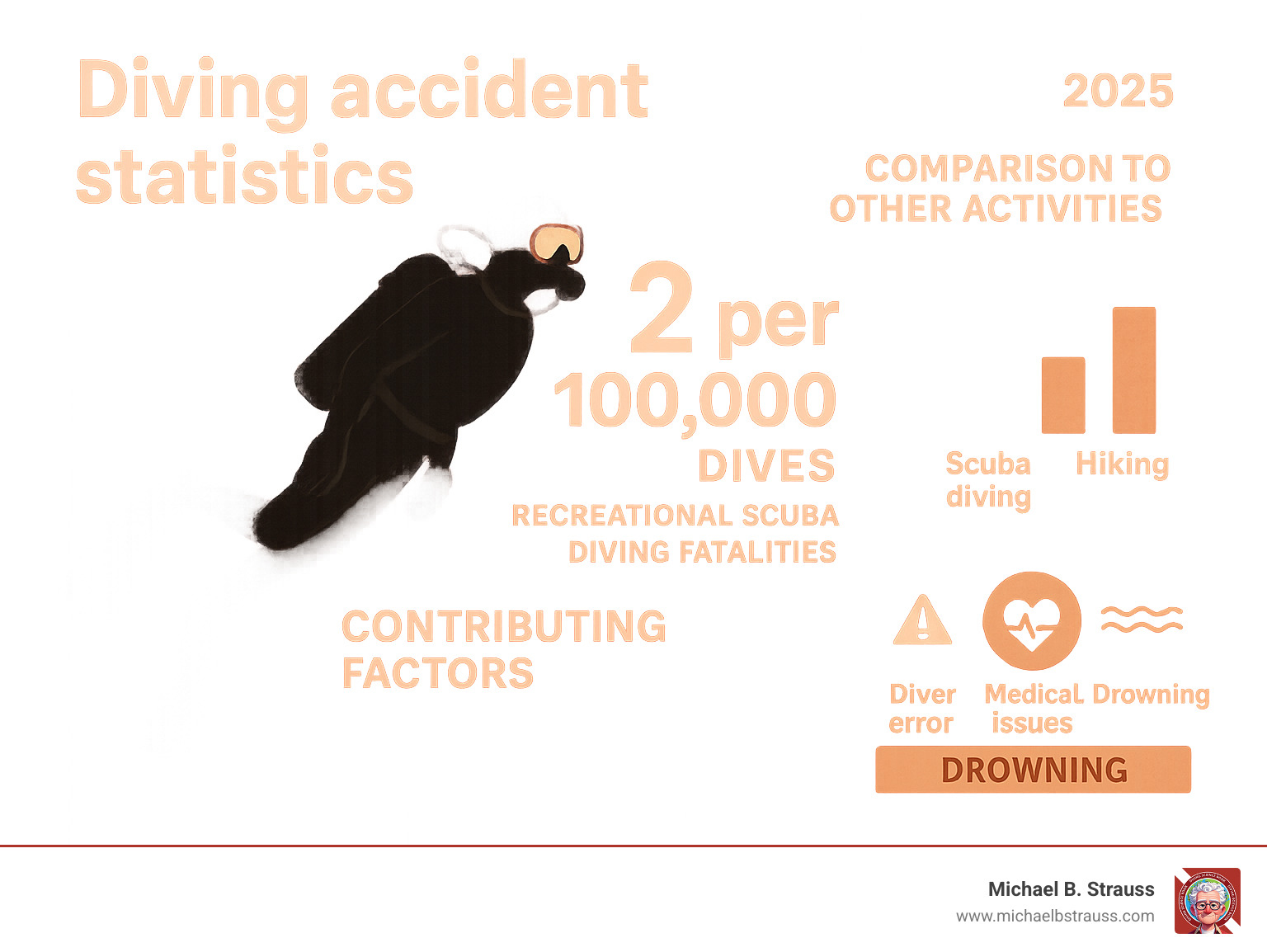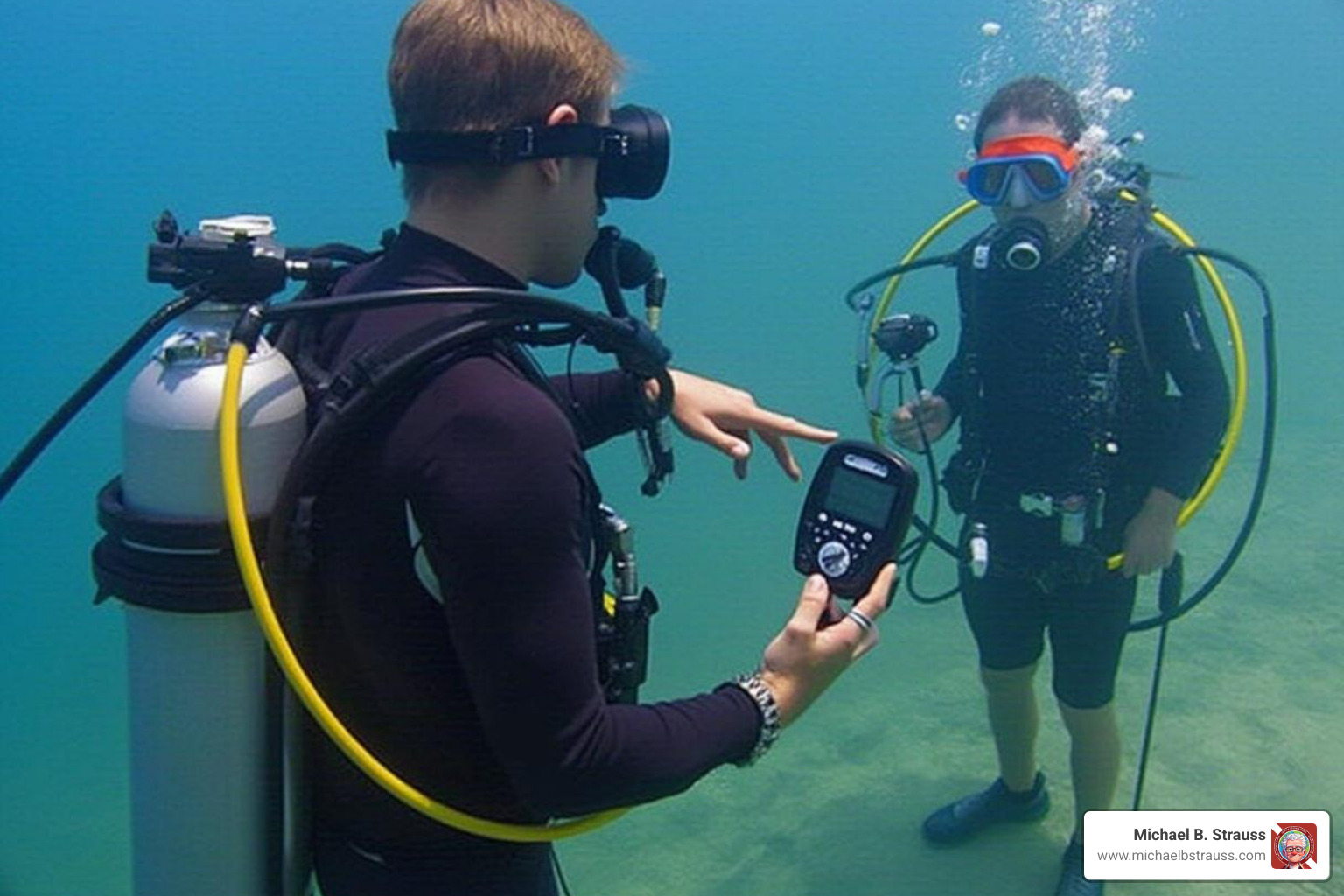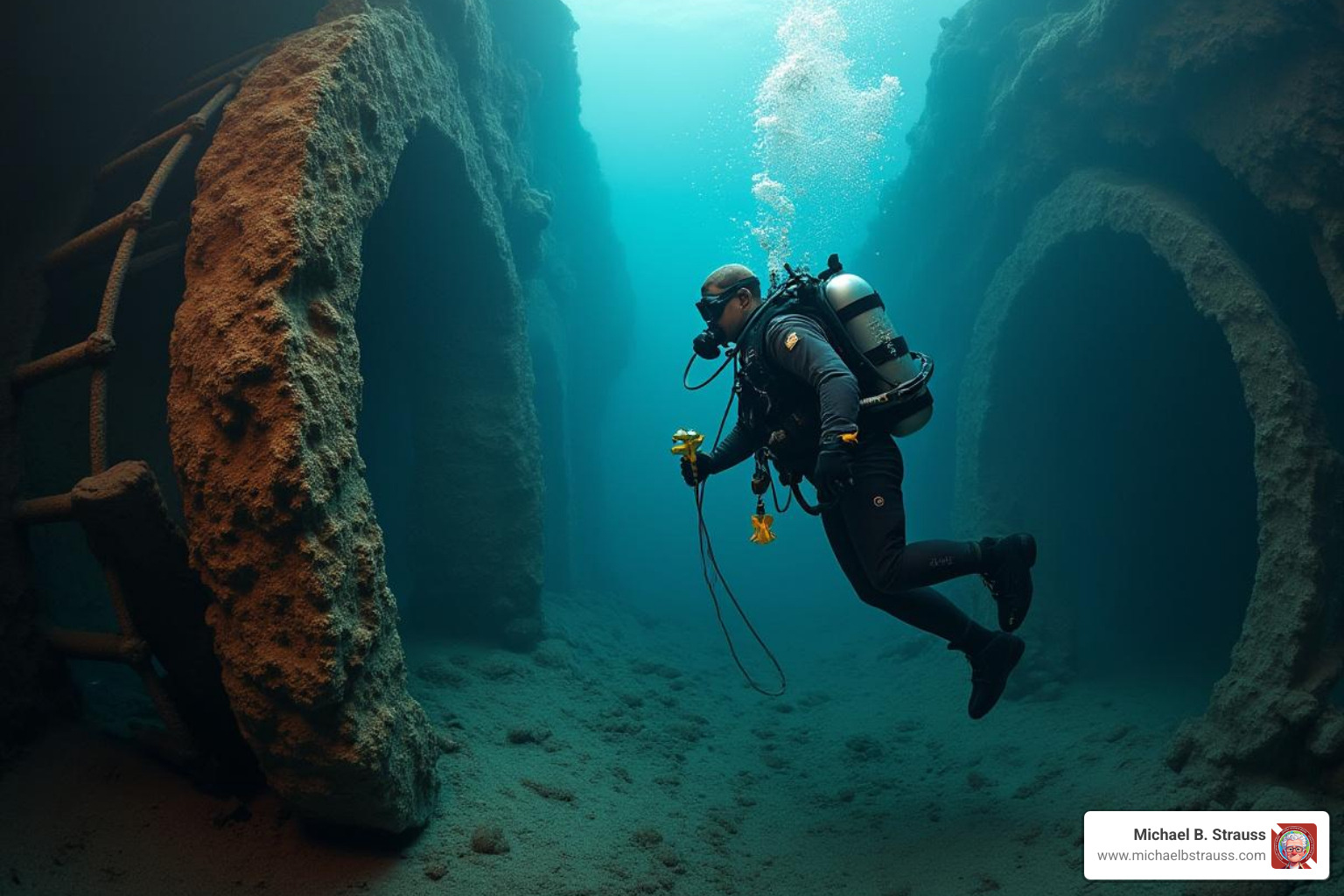Understanding the Risks: An Overview of Diving Incidents
Understanding diving accident statistics is key to safer diving. Here are some important facts:
- The recreational scuba diving fatality rate is about 2 fatalities per 100,000 dives.
- This translates to a risk of roughly 1 in every 50,000 dives.
- The Divers Alert Network (DAN) reports over 1,000 diving-related injuries annually, with over 10% being fatal.
- A staggering 90% of diving fatalities are linked to diver error.
- While drowning is often the listed cause of death, it's usually the result of another issue, like a medical problem or running out of air.
Scuba diving is a popular activity enjoyed by millions worldwide, with about three million participants in the U.S. alone. While diving carries risks, this guide breaks down the statistics to explore the leading causes of incidents. We'll cover how experience, health, and dive type affect risk, and how organizations use data to improve safety.

Diving accident statistics terms at a glance:
A Deep Dive into Diving Accident Statistics
When we talk about diving accident statistics, it's important to look at the big picture. Let's explore the numbers.
Overall Fatality and Incident Rates
Leading organizations like the Divers Alert Network (DAN) and the British Sub-Aqua Club (BSAC) gather data on diving incidents, providing valuable safety insights. For example, BSAC's 2023 report noted 242 incidents and nine fatalities in the UK, numbers lower than pre-pandemic levels, showing that safety efforts can make a difference.
The rate of recreational scuba diving fatalities is about two fatalities per 100,000 dives, or one fatality for every 50,000 dives. To put this in perspective, this is a risk of about 5 micromorts per dive (a micromort is a one-in-a-million chance of death). How does this compare to other activities?
| Activity | Risk (per 100,000 persons per year or per specific event) | Micromorts (per event) |
|---|---|---|
| Recreational Scuba Diving (per dive) | - | 5 |
| Running a Marathon | - | 7 |
| Driving 1200 miles | - | ~5 |
| Jogging (per person per year) | 13 deaths | - |
| Motor Vehicle Accidents (per person per year) | 16 deaths | - |
| Skydiving (per skydive) | 1 in 100,000 | 10 |
| Wingsuit Diving (per dive) | 1 in 500 | 2000 |
| Giving Birth | - | 170 |
The annual fatality rate for insured DAN America members (16.4 deaths per 100,000 persons) is comparable to jogging (13 deaths) and motor vehicle accidents (16 deaths). This shows that diving risks are manageable with proper safety procedures.
The "Why" Behind the Numbers: Leading Causes of Diving Accidents

Analyzing diving accident statistics requires looking at the chain of events. Drowning is the final outcome in over 80% of cases, but it's typically the result of another problem. Safety experts analyze the sequence of triggers, disabling agents, and disabling injuries.
- Triggers (the first event): Insufficient gas (41%), entrapment (20%), and equipment problems (15%).
- Disabling Agents (what incapacitates the diver): Emergency ascents (55%), insufficient gas (27%), and buoyancy issues (13%).
- Disabling Injuries (the final physical problem): Asphyxia (33%), arterial gas embolism (AGE) (29%), and cardiac incidents (26%).
Key causes include:
- Insufficient Gas: A factor in over 10% of deaths, running out of air is a frequent root cause, often due to poor planning.
- Arterial Gas Embolism (AGE): A serious injury from ascending too quickly. Emergency ascents were the disabling agent in 96% of AGE cases.
- Cardiac Events: A major concern, especially for older divers, contributing to about 25% of all diving fatalities and 45% of deaths in divers over 40.
- Immersion Pulmonary Oedema (IPO): A growing concern where fluid builds up in the lungs, potentially leading to drowning.
Crucially, about 90% of diving fatalities are due to diver error. This highlights how much control divers have over their own safety. Dr. Michael B. Strauss's books, like his insights on Evaluation and Management of Pain-Related Medical Problems of Diving, offer vital advice on handling underwater issues.
Analyzing Key Risk Factors in Diving Accident Statistics
Certain factors can increase risk. Understanding them helps divers make smarter choices.
- Diver Experience and Training: Diving accident statistics show that both new divers (fewer than 20 dives) and highly experienced divers are involved in incidents. About 50% of deaths involve new divers, but complacency can be a real danger for experienced divers, as "experience is no barrier to incidents."
- Physical Health: Your physical condition is critical.
- Age: Over half of fatalities involve divers over 50. The average age of a victim is 54, and cardiac-related deaths are 13 times more likely for divers over 50 than for those under 40.
- Cardiovascular Disease (CVD): CVD is a primary factor in 15% of scuba fatalities and is linked to a much higher percentage of deaths in older divers.
- Obesity: A majority of divers who died were overweight or obese (51% obese, 29% overweight). Obesity is often linked to other health issues like CVD.
Staying in good physical shape and getting regular medical check-ups are essential for safe diving. Understanding the physical demands is key, as detailed in Dr. Michael B. Strauss's guide, Decompression Science.
How Different Diving Types Affect Incident Rates

Different types of diving carry different levels of risk.
- Recreational Diving: Accounts for the majority of fatalities (66% in one report) simply due to its popularity. Risks often involve gas management, buoyancy control, or medical issues.
- Technical Diving: Involves greater depths and complex equipment. Incidents often relate to equipment failure or human error in complex dive planning.
- Cave Diving: This higher-risk activity accounts for about 5% of all scuba fatalities. While specialized training is vital, about 80% of recent accidents involved trained divers, showing that complacency remains a significant danger.
- Freediving and Snorkeling: In 2018, DAN reported 18 freediving fatalities (mostly spearfishing) and 42 snorkeling fatalities (often medical events).
- Lobster Hunting: This activity accounts for a high number of fatalities (15%), as divers can be distracted, carry extra gear, and may be out of practice.
Specialized training and strict adherence to safety protocols are crucial for all types of diving.
From Data to Safety: How Incident Reporting Improves Diving
The power of diving accident statistics is that they make diving safer for everyone. Every report provides lessons that help us learn and improve.
The Role of Diving Safety Organizations
Organizations like DAN and BSAC use comprehensive incident reporting systems to turn tragic events into life-saving knowledge. They conduct thorough investigations, gathering reports from witnesses and medical examiners to understand exactly what happened.
By analyzing years of data, they identify trends, such as the rising age of victims or the role of cardiac events in older divers. These insights directly inform safety recommendations and improve diver training standards. For example, if data shows divers struggle with buoyancy, training programs can emphasize that skill more heavily. This system relies on voluntary reporting, meaning every shared incident helps make diving safer for the entire community.

Key Takeaways for Every Diver
So, what does this data mean for you? Diving accident statistics provide a clear roadmap for safety, which Dr. Michael B. Strauss translates into practical guidance. The diving safety community has identified the "Ten Most Wanted Improvements in Scuba"—areas where small changes make a big difference.
- Correct weighting: Avoid being overweighted, as it complicates buoyancy control, trim, and ascents.
- Greater buoyancy control: Master this skill to move gracefully, conserve air, and protect marine life.
- More attention to gas planning: Your air is your lifeline; plan your consumption and monitor your gauge.
- Better ascent rate control: Ascend slowly to prevent serious injuries like AGE or decompression sickness.
- Increased use of checklists: Use pre-dive checklists to catch errors before they become emergencies.
- Fewer equalizing injuries: Equalize early and often during descent to protect your ears and sinuses.
- Improved cardiovascular health: Good heart health is essential dive safety, especially as you age.
- Diving more often: Keep your skills sharp with practice or take a refresher course if it's been a while.
- Greater attention to diving within limits: Be honest about your training, experience, and physical condition.
- Fewer equipment issues: Proper maintenance ensures your gear works when you need it most.
These principles, covered in Dr. Michael B. Strauss's comprehensive work including Diving Science, empower you to take control of your safety. The encouraging news is that most diving incidents are preventable. By embracing these insights, you contribute to a safer diving community for everyone.
Michael B. Strauss provides educational resources and expert insights for divers nationwide and online.
DISCLAIMER: Articles are for "EDUCATIONAL PURPOSES ONLY", not to be considered advice or recommendations.
To gain a deeper understanding of the science behind safe diving, get your copy of "Diving Science" today: https://www.bestpub.com/view-all-products/product/diving-science-revisited/category_pathway-48.html






